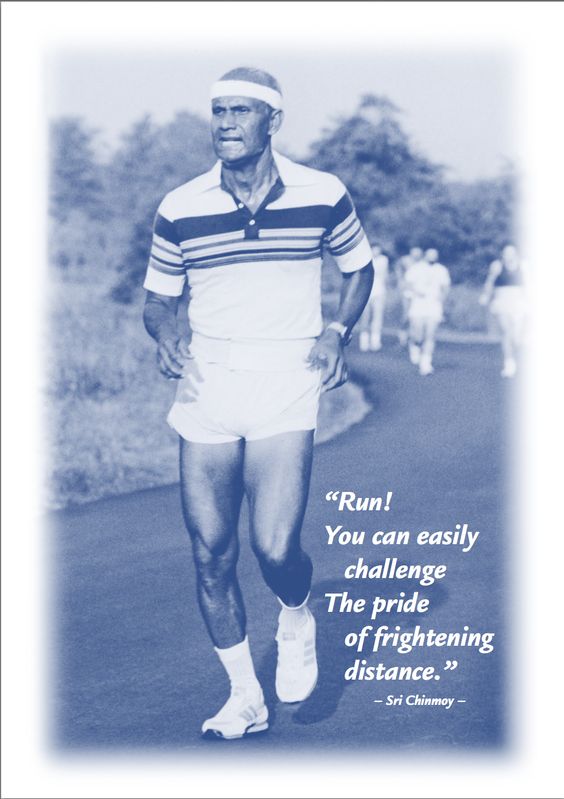Tread softly.
I do my long runs on the treadmill sometimes. It’s not everyone’s cup of tea and there is always discussion about how it compares to normal outdoor running, but with fast drivers on narrow roads and overgrown paths where I live, it’s often the best option. Besides I do enjoy it and I like how you can just set a specific pace and train it.
Today was an 18 miler. Up until now I hadn’t been aware of having a particular kind of mind game on the treadmill. Since the clock on the machine mechanically counts off the minutes from an hour downwards and the belt just turns, there would seem no escape from its dominion. Not entirely dissimilar to everyday life you might say! Yet what is key and interesting is that you do have some freedoms on the treadmill and despite its regimented

nature there are useful strategies for managing the time and distance. Recently I’ve been doing the long runs at a nine minute pace. The first mile or two are always a bit tough but I know that as soon as I see the clock (which counts down from 60 minutes ) changing to the 30s (which of course happens at 39.59), then it’s not far to the 20s. From there it always seems like a short hop down to zero at which point I know I’m over six miles. In my mind I’m already very much thinking of the passing of the time in terms of this circular image. It’s as if I’ve shifted mechanistic time one very small step from its uniform rigidity – an unescapable slow ticking off of seconds and minutes.
While the clock is counting down I try not to look at it, which can be a challenge as a tricky part of the mind can’t wait to have a peak. I may see the first and second mile points pass by (at 51 and 42) but after that I find I’m fairly good at not looking and try not to indulge in calculating how far I’ve gone. The further into the run you get, the easier it is to allow the exact time and distance to get blurred (I’m basing this on doing 9 minute pace – that’s not always the case!)
After an hour the treadmill slows down due to a built in warm-down timer but you can override it by pressing the speed button to get back up to your running pace (usually slowing for no more than about seven seconds) and it will keep going for five more minutes. I run through that five minutes and then start another hour session. Seven minutes into that new session I can stop it again and at that stage I’ve banked eight miles (1 hour 12 minutes).
But for the mind it was never really eight miles and in fact that sounds like a long way to run! I truly don’t think I could do it without some kind of little mind game. To make it easier on my mind it was only ever initially about getting down to the 39.59 point, then knowing that soon the 20s would be looming from which point it never felt too strenuous. The initial fiction is that I’m only going to do six miles but I don’t even think of it as that far, rather just getting into the 30s. So I’ve already told myself not to worry about 18 miles as even 6 will be fine and I can go and get on with other things if I want to stop. But once I’m into the 30s somehow the halfway point is just a tiny bit lower down the analogue clock I have in my mind’s eye. After that, 6 miles seems just around the corner. I’m thinking of it as meaning I need to get to the 60 minute point but actually it will come up quite a bit sooner (at 54 minutes).

Then comes this kind of cheat to get it up to 8 miles. The treadmill automatically slows right down and as mentioned I just set the speed back to normal, losing 7 seconds or so. It then only runs for 5 minutes so my mind is slightly confused as to the distance as it will be a little over 7 miles. Then it actually stops and I have to restart it for another 60 minute session but I’m not thinking of that at all – I’m just thinking I’ll keep it on for another few minutes to get to my 8 miles. Of course the mechanical pessimistic mind, if you let it, will just come in and say exactly how far you’v gone and what is remaining. In fact as you go through the 54 minute point (6 miles) it will tell you that you’ve only done a third of the distance and have a long 12 miles left. But the part of me that is suspending too much of that kind of thinking is perfectly happy that I’m very close to 8 miles now. I feel quite strongly that I’ve done very nearly 8 miles and am very close to halfway rather than being a third of the way. For energy levels and enthusiasm that’s a big difference and it’s something that you create yourself in your mind rather than falling back on the cut and dried outer distance covered.
My mind really is far removed from thinking about the 18 miles (apart from the fact that at the beginning I convinced myself that I didn’t have to do more than 6 if I wasn’t in the mood) – I’m very focused on this getting to the 60 minute point, the five extra minutes built into the treadmill, the restarting and only having to do another seven minutes. The eight mile point feels like a small extra shift over the top of the clock; for some reason it’s not nearly as hard as a rigid addition of two miles. So the last piece in the jigsaw is to restart the treadmill, as if for a new hour session, but just to do the extra minutes (seven) required to reach eight miles. Those last seven minutes are easier too as you know that you don’t have to continue for a full hour and you will have the luxury of stopping it very soon. So there are three little interruptions – at 60 mins when it slows, at 65 when it stops and you restart, and then 7 mins into the new session, when you stop it again for the end of 8 miles. You have probably lost a maximum of 15 seconds in slowing or stoppage time which is not going to effect any training schedule. Once the eight miles are completed then you simply restart the treadmill and do exactly the same thing all over again.

For the calculating mind the six mile point would be the logical place to stop the treadmill and restart it for a repeat performance that would bag 12 miles. That’s no good, though, if you want 18 miles; not only will you have another six miles to do after the first two six mile sessions, but for the first two hours that third set will always be lurking at the back of your mind and feel like a big burden. If it doesn’t scupper the long run, it at best makes it a joyless and mentally tough exercise. Early on in the first session (when the mind is at its most critical) you are not even half way through the first third of the run.
The last two miles (to get from 16 to 18)are also not so stressful, as you know you are finishing off a successful long run. They are not part of the initial structure at all and will somehow just get added on later. You don’t really think of them or ever have them in your mind’s eye as that would make it hard, but on some level you remember and know you’ll just add them in at the end. Doing extra miles at the end is always much easier than doing them at the beginning as the joy is setting in that you have almost reached your goal. If you tried to do them at the beginning, then the mind would get no satisfaction – all that would be going through your head would be the fact that there were still 16 miles remaining to get to the end.

In fact whilst doing the two sets of eight miles I’m telling myself that when this is completed then I’ll have the 18 miles done – this may be helped by the fact that there is an eight in the final number! That kind of thing really can fool the mind. So it’s as if I only find out about the extra two miles when I’ve finished – at which point it’s easy to add them (certainly when you are running at an easy pace anyway). Keeping the imagination engaged means there is always some possibility that things may not be exactly how they appear to the surface mind; perhaps miraculously there won’t be an extra two miles at the end or you might have miscalculated and in fact done two more miles.1
These mind games help us escape the dull, humdrum, overly analytical part of the brain that saps our enthusiasm. The mind can make it harder to tap into our deeper potentials, but at the same time we can use this aspect of mental functioning to our advantage. In the famous Invisible Gorilla experiment with the basketball players, most of us are so intent on counting the throws, that a gorilla is able to waltz undetected across the screen beating its chest. If we keep focused on the matter in hand and don’t let the calculating mind have the final say then some kind of magic might be able to seep in around the peripheries.
Really the eight miles seems in the bag from the point where I get close to 30 on the clock, perhaps when around 33 or 34 minutes are remaining. In fact I might dare to say that the 18 miles somehow already feels completed at that point as the second eight mile session is being kept quietly in another part of the mind. At this stage you have to tread carefully and resist the temptation to think the obvious which is that you are only just past the three mile mark and have barely scratched the surface of a longer 18 mile run.2
It’s often hard to stop the mind from butting in and telling you this, but as much as possible one can just try to ignore it and not let it take any hold. Just as with a reasonable level of concentration one can ignore distracting sounds whilst focused on some mental activity. We may not be able to get rid of them completely but at least we can keep them in their place and not let them get too much of a hold over us. It probably takes a bit of practice too and it always seems to me that this is really what we are learning and training, this capacity very slowly to learn to have just that tiny bit of control over the restless calculating mind, rater than banking miles in our training diary.
This gentle rocking of the mind’s autonomy triggers a more optimistic approach. One is able to delay the mind’s cold calculation of the distance covered and free up the imagination to think quite convincingly that one is much further into the run. With a little force of will one can avoid looking at the clock and have a rough ‘notes on the back of a napkin’ type calculation going on in the background – ‘so I’ve probably passed the six mile point, then will have a short stretch to the warm-down phase, then five minutes, then another short stretch, by which time I might be close to 10 miles’. The delayed reward will be the luxury of adding everything up and seeing exactly where you are. At that stage since you now have a little control over the mind and know you are doing quite well it might be easy to delay a little longer and try and maintain the fiction until you are sure you have passed that 10 mile point. Deeper down you know that you are not quite there, but that knowledge somehow is in a less troublesome and more friendly part of the brain.

The distance is what we are trying to conquer and for that reason it is going to be some kind of a challenge. This certainly doesn’t make it a masochistic endeavour and preclude it from being associated with feelings of joy and satisfaction, but it does mean that we need a technique or weapon to fight it. The one thing we just cannot do is to face it head on, on its own terms. Part of our physical and psychic energy always has to be focused on creating and maintaining a fiction. This shouldn’t be something rigid and all consuming, but rather a kind of inner vigilance or awareness that is always ticking over in the background. Perhaps driving a car might be an analogy; the consciousness can be directed to other things to a certain extent but one has to keep one’s eyes on the road.
Somehow between the stark and bleak outer reality of the long distance and your fragile self you have to create a buffer zone where you are continually reinventing and reimagining the frightening distance in a way to make it more palatable. There are many interesting connections between this approach and the way a child develops to cope with the outer world. The world is a daunting place for a young child, but over time, with the benefit of stories, play, the exercise of the imagination and the other elements of childhood, all being well he or she is eventually able to cope with outer life.
None of this simple mental jugglery is difficult and the pattern that suits each individual slowly emerges during the training sessions. However, it does take practice and a good bit of determination to reign in the thoughts. It’s very much like meditation but is inherently doable. Often when trying to meditate one is aware that it’s necessary to try and still the restless mind, but that can seem almost impossible. With this kind of approach to training you can take lots of small verifiable steps. Since you are doing it in tandem with quite intense physical activity you get quick feedback.
Your strategy is unlikely to be the same but perhaps there is something in the principle that might help. If the mind can be kept a little quiet and open at the start of the session then intuitively something will appear as a possible solution to the conundrum of the long training run. In fact what I’ve described above was one of many approaches and I’ve gone through it in detail just to give an idea of the general principle. For other long runs I would have used different strategies that just slotted into place on the day and indeed sometimes, when the mind is very calm and untroubled by distractions, one can just do the session with no particular mind game – that is probably the ideal scenario.
In his poetry and discussions Sri Chinmoy talks of the goal or endpoint almost having a kind of personality or consciousness to it. If we can identify with it then it will come towards us a little bit and shorten the gap. The quote referring to the ‘pride of frightening distance’ at the beginning also imbues these seemingly material things with a kind of living character or consciousness of their own. I don’t think we can relate to this through the calculating and doubting mind, rather it is other parts of our nature that allow that perhaps just to be a possibility. It’s almost as if we have to look at it out of the corner of our eye bypassing that part of the mind that makes a cold rational calculation of the number of miles – it’s almost a childlike yet creative part of the brain.
- During channel swims apart from hoping the boat might break down I used to imagine how France and England were just one piece of land and there was no gap, just some sea water. Or I’d imagine the tectonic plates maybe shifting a little and bringing the land closer together. Were there worm holes in the fabric of time perhaps? Really anything that might help it’s worth grabbing on to. ↩︎
- This is the feeling early on that you have more or less finished the long session. Sometimes, during the six hour swim for example, it might happen in the first half an hour. It’s quite a powerful feeling. On one level it’s basically the full determination to get to the bigger goal, all encapsulated in a moment with no disturbance from the physical mind, and yet on another level it’s a very precarious and rather tentative step as you are trying to defy the reality of the situation (on a rational level it’s very hard to explain how you can turn ‘three miles’ into being close to 18 miles). You can hear that rational left brain voice in the background but you cling on to your visualisation or imaginative creation. I’ve sometimes felt a kind of euphoria at this point -you’ve been dreading swimming for six hours in the cold and suddenly after half an hour it feels like it is done. At this very moment the mind crashes in to tell you this is complete nonsense and you have at least five and a half more hours left! You have to have the strength to allow the mind its say but to try and give it a quiet back seat and at the same time have the confidence to allow for the possibility of this more imaginary world either being true or at least having some bearing on the situation. As I’ve mentioned elsewhere I”m sure there is a connection between this and the way children develop through play, games, fairy tales and stories – they do seem to know on one level that the house in the forest is not made of gingerbread, yet at the same time they seem to be able to work with this kind of imaginative reality to understand themselves better and their place in reality. ↩︎
